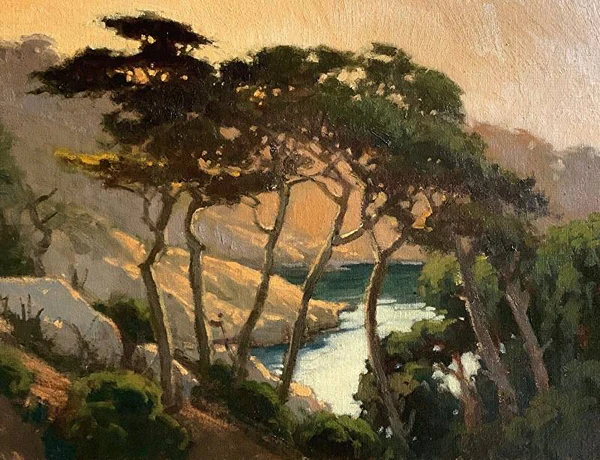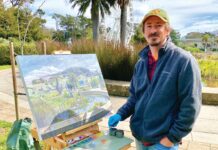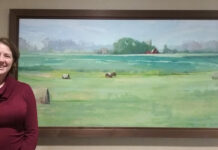A PaintTube.TV “Art Notes” interview with Brian Blood on how you can benefit from painting landscapes en plein air and in the studio; his approach to color, and more.
Meet oil painter Brian Blood, of Pebble Beach California. Brian has two excellent videos on painting landscapes (Outdoor Painting Secrets and Studio Painting Secrets). He is widely recognized as one of California’s most important plein air impressionist artists. He’s married to award-winning artist Laurie Kersey, and they’re living their childhood dreams.
Art Notes: You paint both en plein air and in studio: What does each give you as an artist? Why is it important for you to work in both ways?
Brian Blood: Working out of doors is a lot like exercising — it keeps you fresh and alert and invigorates your creativity. It challenges you to look for information and lay it down on your canvas quickly. It trains your eye to see values, temperatures, and lighting effects accurately so when you do go into the studio to potentially work on something perhaps larger or more complex, you have the tools to get the job done.
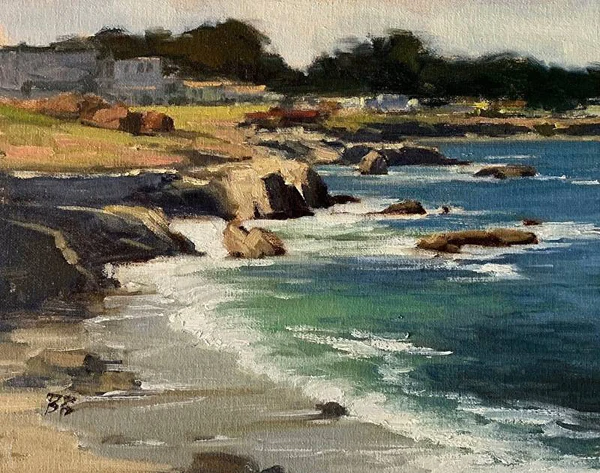
When deciding whether you want to paint a scene: What do you need to see? What don’t you need in a scene?
All I need is something that interests me, that challenges me. It may be the subject, or it may be dramatic lighting or weather, or it could be simply an object that catches my eye. I’m always seeing things I want to paint, I’m always looking for things to paint, and I try to remember them so if I am out painting a scene and it’s not working as well as I had hoped, I may be able to remember a past situation and apply some of those memories.
What does your process give you? What about it allows you the freedom to paint your best work?
My process is to simplify whatever it is down to its basic forms and then build it back up to a finished statement. Some of my best paintings (outdoors) have been done very quickly, with a fresh look, and captured a moment in time.
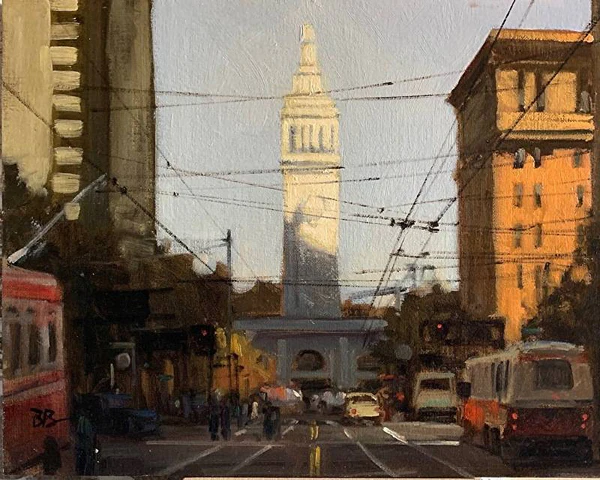
You start by blocking in the major shapes and planes when painting landscapes. Why?
I block in the major shapes for a number of reasons:
- To establish the composition quickly and assess whether it’s working or not.
- To block in the local colors I see at first and check to see how they relate to each other and to determine if they’re interesting or not.
Once you have your major shapes and have created a color note for each, you then can begin the process of comparing them to one another to see if they are relating correctly and make any shifts or changes as needed.
How do you approach color? How much do you rely on local color, and how much do you change?
When I’m outdoors working directly from nature, I’m trying to capture basically the colors and relationships I am seeing, I’m not making things up. It’s important to be as accurate as possible as this is the reference you’ll be taking back into your studio to assist you with potentially a larger work.
Once in the studio, you may take one or several location studies along with your photo reference and melt them into your studio painting, using certain moments or elements in each of them to come up with a finished painting. But this is a conscious choice you the artist will make based on the collected info you have.
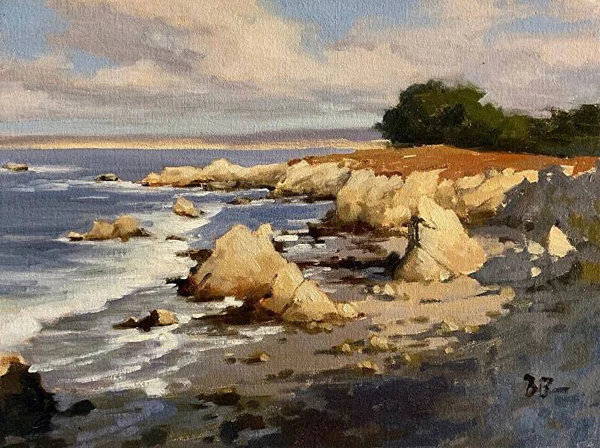
What do you think through from a composition standpoint? How do you know when you’ve got a good composition?
To me a good composition must have balance to it. And what I mean is that the objects or elements are arranged esoterically and interestingly. They play off of one another to create a pleasing, balanced, interesting design. Each case is different but I know it when I see it, as well as being able to shift elements slightly to get a better design.
Having a strong, readable, and consistent composition is by far the most important part of a successful painting. I was lucky to have worked as a graphic designer and illustrator for many years prior to being a full-time painter so I got a strong background in design and composition, and I believe it helps me to this day with my work.
Once you’ve finished a painting, how do you assess it?
I sign it, put a price on it, and sell it! Then I move onto the next battle (painting).
Visit EricRhoads.com to find out all the amazing opportunities for artists through Streamline Publishing, including:
– Online art conferences such as Plein Air Live
– New video workshops for artists
– Incredible art retreats
– Educational and fun art conventions, and much more.
> Subscribe to Plein Air Today, a free newsletter for artists
> Subscribe to PleinAir Magazine so you never miss an issue

